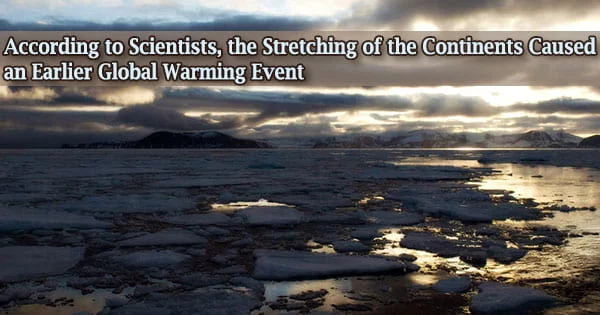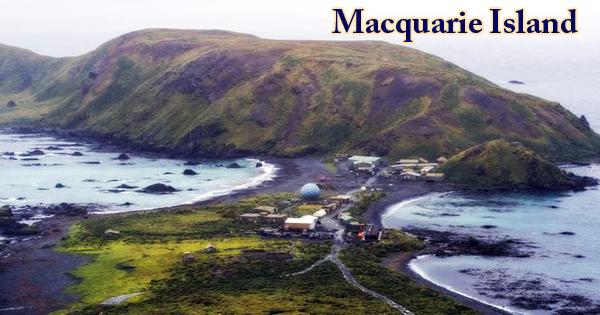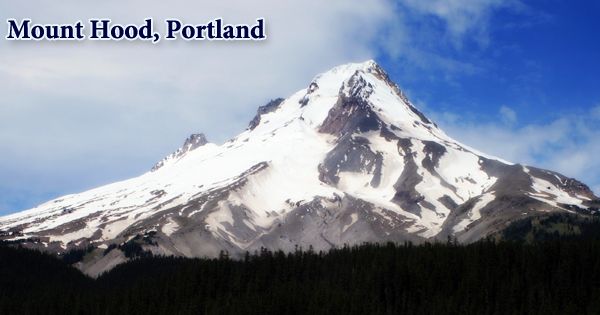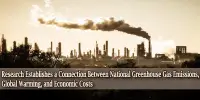Researchers at the University of Southampton have shown that one of the most dramatic and abrupt episodes of global warming in Earth’s history is probably the result of the stretching of the continents.
In collaboration with colleagues from the Universities of Edinburgh, Leeds, Oldenburg, Florence, and the Chinese Academy of Sciences, the researchers investigated the effects of volcanic eruptions and global tectonic forces during a period of extreme environmental change that occurred 56 million years ago.
The earth warmed by 5-8oC throughout this time, culminating in the “Palaeocene-Eocene Thermal Maximum,” or PETM, which lasted for roughly 170,000 years. This changed the evolution of life on Earth by causing the extinction of several deep-sea animals.
The research hypothesizes that dramatically reducing the pressures in the Earth’s deep interior resulted from the extensive stretching of the continental plates in the northern hemisphere, analogous to the pulling of a toffee bar that thins and eventually splits. This caused a layer of sticky, molten rock just below the planet’s crust to melt rapidly but intensely in the mantle.
The researchers demonstrate that the ensuing volcanic activity was associated with and probably contributed to a large burst of atmospheric carbon release that was linked to PETM warming. The journal Nature Geoscience will soon publish the researchers’ results.
Even though the process is entirely different, the PETM event is sometimes seen as an ancient analog for understanding current warming because of the high speed and scale of warming.
“Despite the importance and wider relevance of the PETM to global change today, the underlying cause is highly debated,” says Dr. Tom Gernon, an Associate Professor of Earth Science at the University of Southampton and lead author of the study.
“It’s generally agreed that a sudden and massive release of the greenhouse gas, carbon, from the Earth’s interior must have driven this event, yet the scale and pace of warming is very hard to explain by conventional volcanic processes.”
Despite the importance and wider relevance of the PETM to global change today, the underlying cause is highly debated. It’s generally agreed that a sudden and massive release of the greenhouse gas, carbon, from the Earth’s interior must have driven this event, yet the scale and pace of warming is very hard to explain by conventional volcanic processes.
Dr. Tom Gernon
The scientists discovered crucial evidence for a rapid and broad episode of volcanic activity throughout the North Atlantic Ocean that lasted little over 200,000 years, strikingly similar to the length of the PETM, using archives of rock excavated into the seafloor close to the Atlantic Ocean’s edge.
The researchers expanded its investigation into the North Atlantic region, including Greenland and the Faroe Islands, as a result of this discovery. They discovered that the kilometer-thick lava piles that began to erupt right before the PETM had peculiar compositions that indicate a considerable increase in the amount of melting of the highest solid layer of the Earth’s mantle underneath the continent.
“This finding is significant, because we know that parts of the continental mantle in this region are enriched in carbonates, a major source of carbon,” explains Dr. Gernon. “This rapid increase in mantle melting likely released a very large volume of carbon certainly more than we had previously expected.”
The period of severe volcanic activity coincided with the period of greatest plate tectonic stretching of the continental landmass connecting Greenland and Europe. Eventually, Greenland and North America broke away from Europe, creating the North Atlantic Ocean.
According to scientists, the Earth’s mantle underwent significant melting during this last stage of stretching, which caused a significant carbon dioxide release and subsequent global warming. The researchers calculated the potential carbon emissions from this method using a variety of models.
“Using physically realistic estimates of the key characteristics of these volcanic systems, we show that the amount of carbon needed to drive warming could have been attained by enhanced melting,” says Dr. Thea Hincks, Senior Research Fellow at the University of Southampton and co-author on the study.
The researchers come to the conclusion that abrupt warming events like the PETM, which are quite likely to have happened during many other periods in Earth history, are greatly influenced by rapid gas release from the solid Earth.
“Such rapid events cause a fundamental reorganization of Earth’s surface environment, altering vast ecosystems,” concludes Dr. Gernon.
















